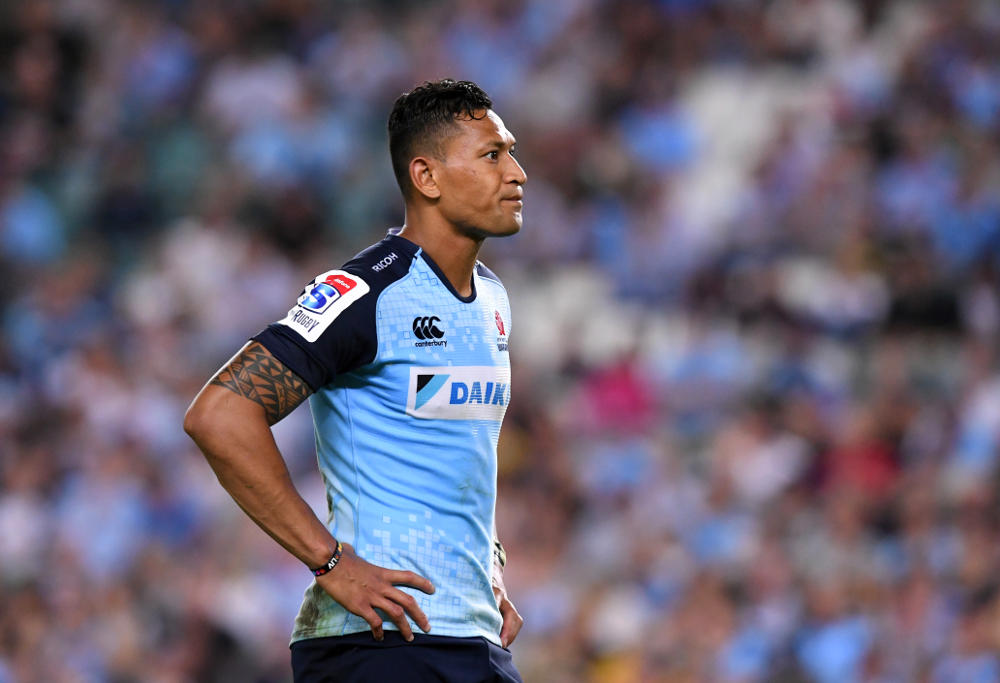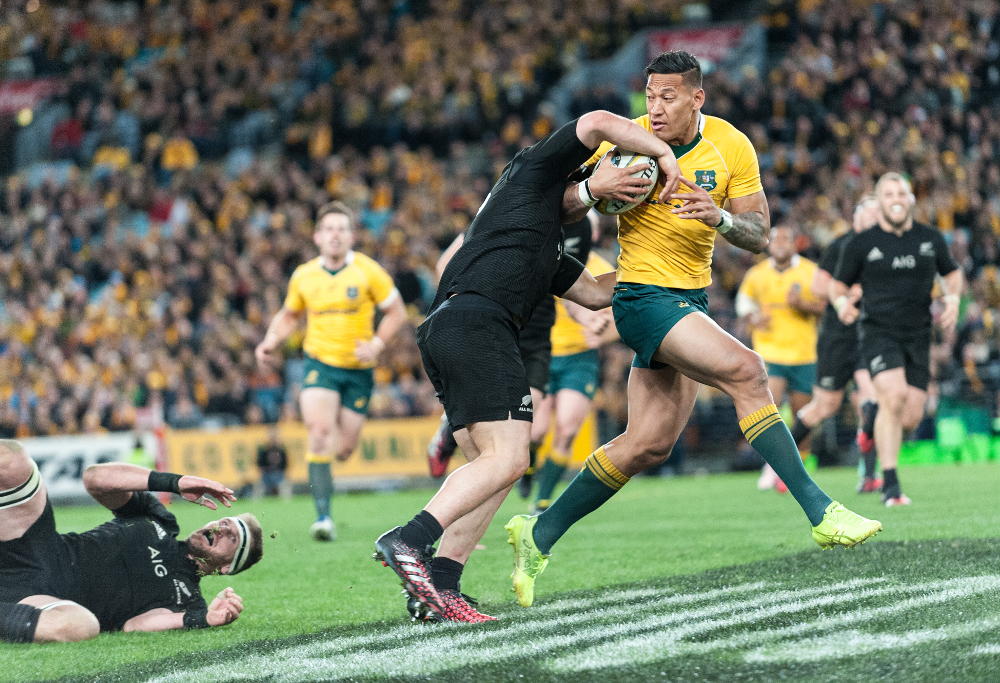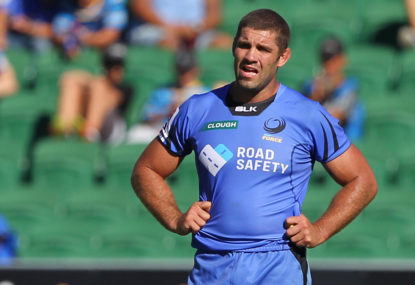We are on the eve of a big decision and it needs to be the right one.
For Australian rugby to survive it needs more players, more supporters, more sponsors.
In a thriving market with content hungry fans, this is any easy problem to solve, the AFL and to some extent the NRL have chosen to expand, expand, expand!
Like the Romans, they have established garrisons and outposts on every scrap of their hard-fought territory.
They have had the resolve to cut off any gangrenous limbs to protect their brand. Re-badge or relocate not wall off Scotland’s north and leave it to the Highlander savages.
But what do you do about a problem like my rugby, a niche game with a couple of strongholds and some pockets of resistance scattered across the country.
The strongholds are OK, just. They can bring in enough spectators and the sponsorship that comes with them. Junior players follow. It doesn’t matter if they win or lose, they have reached a critical mass to survive.
But what about the provincial sides, they don’t have the active supporter base to self-sustain, they have to rely on handouts from their richer cousins to survive.

Recent events have illustrated that there is not enough money in the coffers to support the three struggling provincial Super Rugby franchises.
As a consumer, I hear the ARU, the media and many fans saying that is that there isn’t enough talent to support five franchises either.
I am a bit cynical and feel like this is a way to soften the fan-base into agreeing to purge.
It has certainly worked in regions where their franchises are not under threat.
I am not convinced the problem is that there isn’t enough money to cultivate and retain Australian talent. And there is plenty of it, enough for at least one extra franchise, fully trained up in Europe and Japan, much more squandered to the NRL and AFL.
I watched the Broncos play the Titans this weekend and saw eight playmakers that would hold their own in a playmaking jersey in at NRC level.
Australian rugby has been left with less than a handful of number 10s to choose from. A dozen locks ply their trade as AFL ruckmen each weekend.
This puts the ARU are in a difficult position.
If it were NRL or AFL, they would just shut the franchise down, their fan-base and junior players just move to the next closest team, usually within 50 km’s away.
They still have the same number of viewers, their team plays at a different ground in a different jersey. Their Bears shirt now has a Lion on it.

The ACT Brumbies’ fans and junior regions are Sydney overflow and regional New South Wales, If they were shut down, the rugby supporter attrition rates, although undesirable, would be relatively low compared to the Rebels or Force.
If you close down the Western Force or the Melbourne Rebels, you lose a significant portion of their fans and their grass roots program withers. It doesn’t matter how much cash you plough into grass roots, if you don’t have a local side to idolise and barrack for, the ship will be lost beneath the waves in the heavy seas of a competitive market.
At the risk of boring the readers with mathematics, let’s look at some hypothetical numbers: three sides bring in 2/3rds of the income they require – in total enough for two sides.
In this hypothetical, we remove one team and its 2/3rds income and supporters, so this leaves enough supporters and funds for 1.3 sides total. The burden on the ARU is reduced by 1/3rd but there are still two teams below the yellow line.
In reality the dynamics are far more complex but the general principle holds. If the SANZAAR are consistent, the cuts will continue, with the loss of the second team inevitable. Super 12 is on the Horizon.
So how do you drop a team and keep the supporters and the grass roots programs?
This becomes an exercise in psychology and understanding consumer behaviour. Although elite rugby is now a commercial product, it still has a strong link back to amateur rugby at a club level making it more personal.
A bit like the Ford versus Holden battle in motor racing, fans are loyal and not as predictable as Coke versus Pepsi, Heinz versus Watties.
I am speaking as a fan that has lived in four out of the five franchise cities. I only have Australian Brumby Territory to add to my bucket list.
I am pretty lucky because I am happy to watch any Australian Franchise, anywhere. I could survive on a diet of four franchises donating two home games a year to play at my local stadium add an international for good measure.
But I am in the minority, neither a club player nor a loyalist, but I do understand a fan’s mindset. The true value of a local team that you can call your own, local players touring the schools doing community outreach should not be dismissed.
Tribal mentality is in our DNA and ignoring this fact is done at your own peril.
So, the keystone of a good solution requires the maintenance of a local presence of an elite franchise in all provinces. A merger has everything going for it, except for the complexity of implementation.
It is said that a good compromise is one where everyone leaves the table unhappy and I don’t see this being any different.
To the Star Wars fans, the Rebel Force Alliance, copyright infringements aside, has a nice ring to it. It solves a large number of problems.
Here is where the brainstorming suggestions and fact free rhetoric begins. I am sure some of it will inflame fans and trolls alike.
We are looking down the barrel of a massive payout and millions in legal fees. Giving Andrew Cox the reins for the remains of the contract is an obvious solution.
Competition wide there will be 90 players out of work and probably the same number again of coaches, trainers, admin and medical.
It is easy enough to use terms like natural attrition and transfers but at its heart there is still a contraction and job losses.
Well-funded teams like Toulon and teams with great depth like the New Zealand Franchises have the luxury of rotating and resting players to manage fatigue and injury. Instead of the money saved going to buying back prestige and marquee players, I think it would be better spent on expanding the squads and the associated player development.
There is a problem in the corporate world where managers get promoted and ‘Kick away the Ladder’ preventing younger, better skilled staff from progressing and taking their jobs.
Bringing in managers from other companies further increases the log jam at the top. The same applies to Wallaby and Super Rugby.
There is a concentration of ‘Elites’ at the top level, which will continue with the contraction of Super Rugby teams.
Selectors require experience in the job that they are applying for, creating a vicious circle. For prospects to gain elite status and progress they have to wait for an injury or go overseas.

Expanded squads help to expose and harden the emerging players for a more competitive arena.
My suggestions for implementation and troll bait.
1. The Nomadic Rebel Force squad gets a concession to extend its squad even further, a core, senior group and smaller local development groups in both Perth and Melbourne.
I am reminded of the extended squad at a Western Force versus Perth Spirit game played in Bunbury earlier this year. Hodgo versus Hardwick, the old guard meets the new breed in a teachable moment.
2. The majority of South African Games to be played in Perth, New Zealand in Melbourne. Save a Chiefs game for Perth, they sellout for reason. This is an easy way to reduce player travel fatigue.
3. Reds, Brumbies and Waratahs to play all Rebel Force games away. This is a controversial suggestion, but critical in ensuring that the provinces maintain a presence. The other Australian franchises need to contribute to the solution.
4. One home game per conference (SA, NZ) to be surrendered to the Rebel Force. This is a SANZAAR problem and they need to be part of the solution.
To the last problem to solve is the gap between amateur and professional skills and performance levels. The problem is not directly linked to the loss of a team but why not seize a potential opportunity.
I think the NRC concept is fantastic. Its perceived prime objective – to keep Wallabies fit – is achieved. It also allows the franchises to window shop for emerging talent for next year, but why stop there?
Emotionally I think many of us would like to see it extend into the Super Rugby season, providing a platform for fringe players and players recovering from injury to get match fitness at a near elite level. It is also a great opportunity to showcase Rugby to regional areas and promote grass roots.
Commercially, the Super Rugby Players in an extended squad are already being paid, so no real problems there, but the prospect players are still amateur weekend warriors with day jobs.
There are player payments, admin and travel costs that need to be covered. This could be offset by a potential revenue stream with sponsorship and TV rights. Or even from the alleged windfall from axing a team.
The counter argument is to use club rugby for this purpose. The Shute Shield may be at a high enough standard but I am not sure that that can be said for the Brisbane, Melbourne, Canberra or the Pindan Comp in Perth.
Full credit to their level and intensity but I suspect a pseudo elite country wide pro-am competition might be what is needed to bridge the skills and experience gap. I think the kiwi model is spot on. Perhaps some clever hybrid of the two is the Australian answer.
As always, Have your say, can this work?
































































































